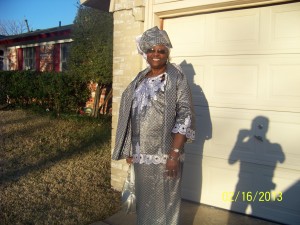
It is said that Black History is a continuing strength in our society. I agree; it makes society aware of the great contributions made by Black Americans and it encourages young Black children to use math and science more; and to do more than sing and dance in the entertainment world.
The true meaning of Black History Month is honor and respect for another person and his/her contribution to society.
Here are some distinguished Black Americans: Richard Allen, an organizer and the first Bishop of the African Methodist Episcopal Church (AME).
James Armistead Lafayette was the first Black double agent. He was born a slave; but later became a valuable intelligence agent during the Revolution War by gathering information concerning British forces at Portsmouth, VA.
George Bonga was a fur trader of Black and Native American descent of considerable wealth; who was one of the first Blacks born in what is now Minnesota. He served as interpreter at the signing of the Chippewa Treaty of 1837.
Ambrose Caliver was a senior specialist in the education of African Americans in the U.S. Office of Education from 1930 to 1946. Also, Caliver initiated and directed the Federal Emergency Relief Administration (FERA) which President Herbert Hoover created in 1932; it was later replaced in 1935 by the Works Progress Administration (WPA).
FERA gave loans to the states to operate relief programs. But its main goal was alleviating household unemployment by creating new unskilled jobs in local and state government.
WPA emergency education programs under the New Deal created and directed “Freedom’s People” a series of nationwide radio broadcasts on the participation of Blacks in American life.
George Carruthers, a Physicist, was one of the two naval research laboratory persons responsible for the Apollo 16 lunar surface camera/spectrograph which was placed on the lunar surface in 1972.
Elmer Simms Campbell was a master cartoonist of sophisticated humor for Esquire and Playboy magazines. His art also appeared in hundreds of newspapers and magazines as a syndicated feature. Albert Cassell, an Architect, he worked on the construction of five buildings at Tuskegee Institute and as a draftsman he was responsible for designing an industrial plan for the manufacture of silk.
William Tucker was the first Black child born in America on January 3, 1624 in Jamestown, Virginia, James City County. He was the son of Slaves Anthony and Isabella. He was baptized there and was sold at Fort Monroe to an English sea captain named William Tucker.
Captain B. Collins patented the portable electric light in 1938. Prince Hall petitioned the city of Boston to establish schools for Black children equal in quality to those for white students in 1787. John Rock, an attorney, was the first Black to practice before the U. S. Supreme Court in 1865.
Frederick McKinley Jones, born in Cincinnati, Ohio in 1893; and orphaned at the age of nine, is best remembered for devising a method to refrigerate trucks carrying perishable food, an idea expanded to include air coolers for ships, planes, and trains. As a result of this method called pre-fabricated refrigerated construction, meat, fruit, vegetable, and butter could be transported long distances.
Peter Hill, born a slave was a highly skilled clock maker; only the most skilled craftspeople could create one. Two of the clocks Hill made still exist. One is in the Westtown School in Westtown, Pennsylvania. The other is in the National Museum of History and Technology at the Smithsonian Institution in Washington, D.C. If you get an opportunity, go by and see it.
Andrew Jackson Beard lost his leg by crushing it between two railroads cars, while linking them together. Beard then created a device to hook cars together automatically; it became the model for a national standardized linking mechanism. Beard also patented a new form of plow and a rotary steam engine.
Paul Boli in 1955 invented the first heart pacemaker. However, Otis
Boykin created an electrical mechanism as a regulating unit for it. Raised in Dallas, Texas, Boykin device uses electrical impulses to maintain a steady heart beat.
Frederick M. Jones invented the motor, the ticket-dispensing machine in 1939, the Air Conditioning Unit in 1949, the thermostat control in 1960 and the portable x-ray machine. As a born Texan, I know I thank Frederick M. Jones.




